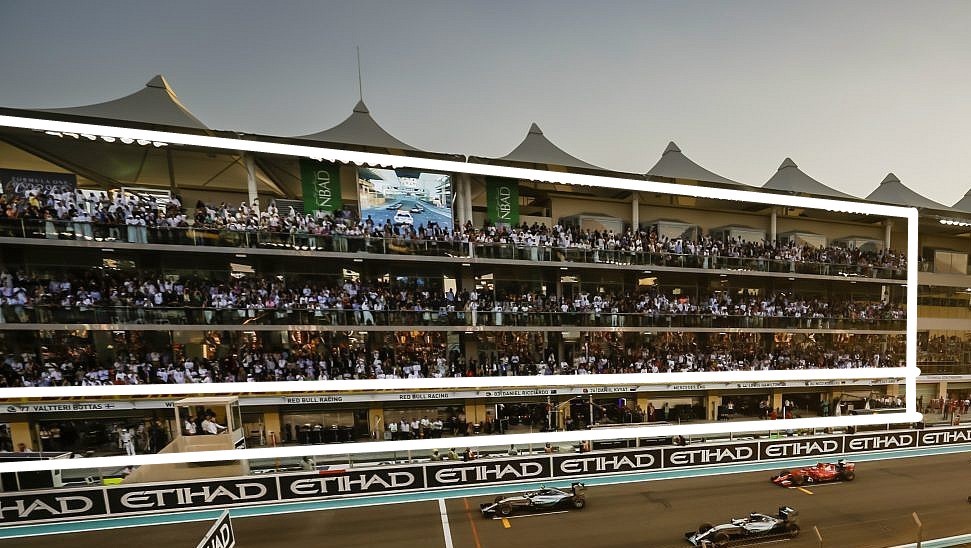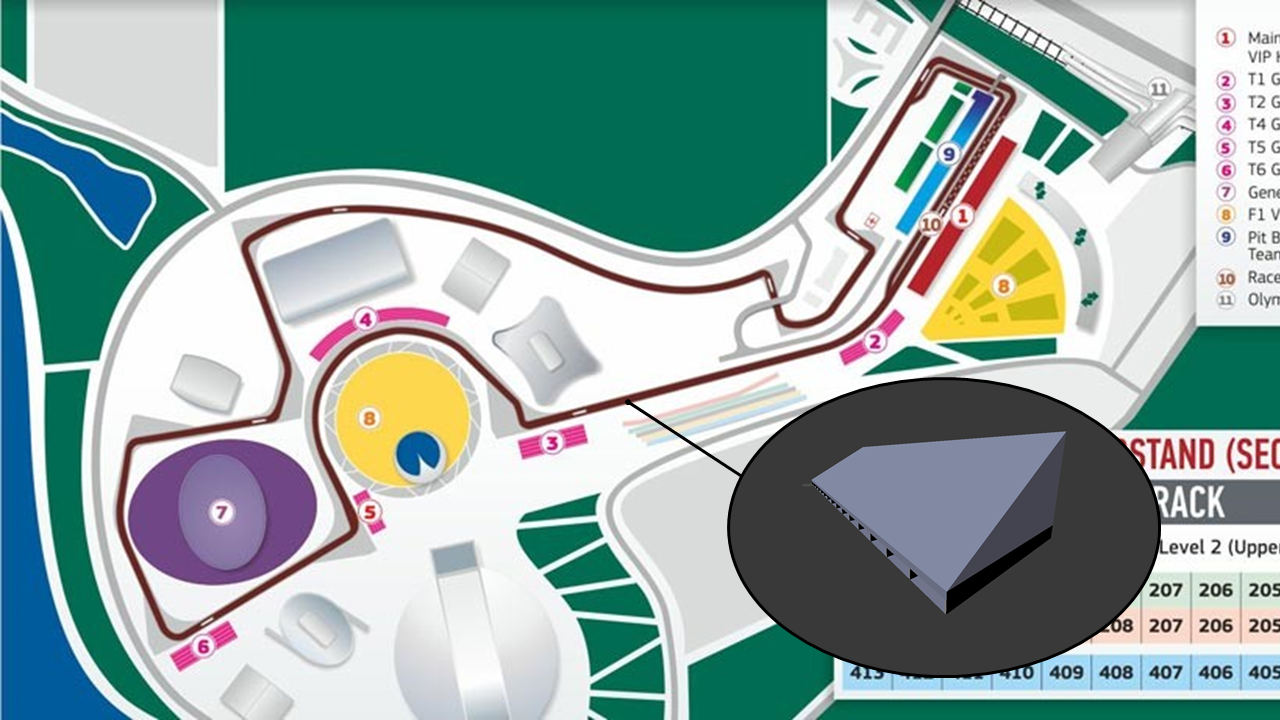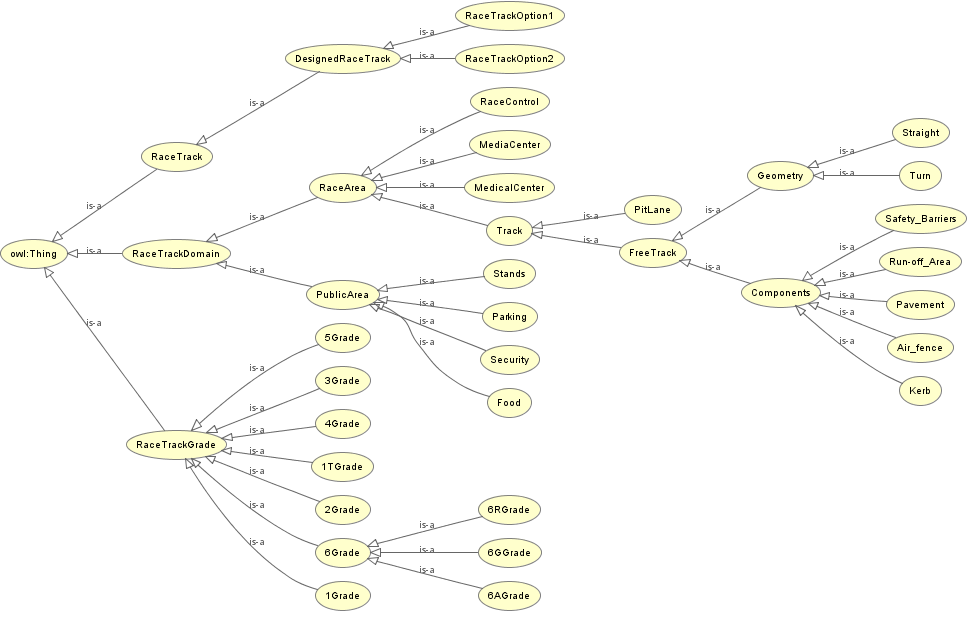Abstract
For the first individual Assignment I decided to model an ontology for race track design. Research has mainly been conducted in the internet, as this topic has no major publications elsewhere. The most important source where the regulations by the Federation Internationale de l’Automobile (FIA), which is the biggest association to represent the interests of automotive organisations and car users. One of its main functions is also the organisation of many motor sport competitions, for example the Formula 1 (F1) World Championship. The FIA licenses motor sport circuits and categorizes them in several grades for different competition classes. There is a list of all FIA-licensed circuits, which could be used as a basis for a knowledge base corresponding to the ontology to be build in this assignment. For this ontology I decided to strongly focus on the racetrack itself and model other components only roughly. The main components of the track are on the one hand defined by its geometry and its components.
Ontology
For my Ontology I first used the FIA-grading-system to categorize the different circuit classes from one another .This is done within the class RaceTrackGrade, which has the different circuit grades as subclasses. Every single race track has exactly one grade, so I modelled this logical axiom within the ontology. The much bigger part of my ontology is the RaceTrackDomain-class, which is further divided into the public area of the race track and the closed area, which is only accessible for the persons working at the track as drivers, team members, journalists etcetera. The public area consists of different services for the audience, including food, parking, stands and security. These different areas are not the main focus of this ontology and therefore only named and modelled in very few detail. The main component of the RaceArea is the track, but there are also other services like medical centre, media-centre and race control facilities. In the following subsections, the different classes are described briefly.
Parametric model
For this assignment I decided to model the grand stand of a Race Track including the boxes for the acing teams in the ground floor and places for spectators above the boxes. I took inspiration from the Yas Marina Grand Prix Circuit in Abu Dhabi, which is shown in the picture below. Pit boxes in the lower part of the building and spectator area above the pits are marked with white lines in the picture.
 Source: https://yasisland.ae/wp-content/uploads/2017/05/F1-1-1440×900.jpg
Source: https://yasisland.ae/wp-content/uploads/2017/05/F1-1-1440×900.jpg
As my model is mainly composed of two parts, the pit area and the spectator stands, I chose one major parameter from each of these fields.
In terms of boxes I chose the total number of them, as this limits the number of teams and cars for races at the circuit. The boxes have to be positioned next to each other at the pit lane, so this parameter determines the total width of the whole stand, because in my model the spectator area stretches above all boxes.
For the crowd area the maximum number of spectators is the main parameter. As my model only contains one tier for the spectator area, this number defines the depth of the stand.
Besides these two major parameters, there are some more minor which fix the dimensions of each box, their distance, the area for each spectator an the angle o the stand which determines its gradient.
The visualization of the model is shown below:


